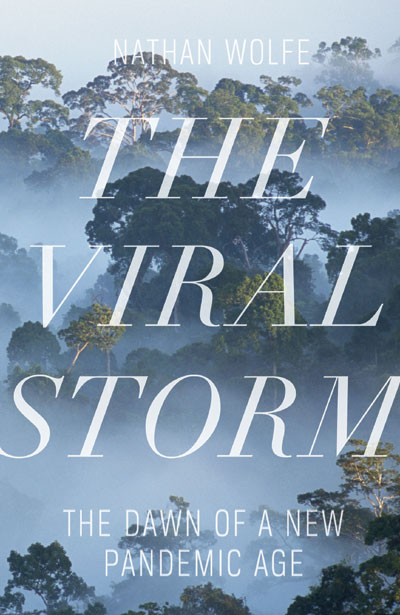 The Viral Storm: The Dawn of the New Pandemic Age
The Viral Storm: The Dawn of the New Pandemic Age
Viruses, along with bacteria, are what most of us used to call “germs”. Both are capable of causing illness and both can be lethal. It is a bacterium called Yersinia pestis that causes the plague; AIDS, on the other hand, is caused by a virus, the so-called Human Immunodeficiency Virus or HIV. Viruses are also the causes of the flu and common colds, as well as the more deadly polio and smallpox. But whereas bacteria are, for the most part, free-living organisms equipped with all of the machinery to live and reproduce, viruses are of another kind altogether. They are merely tightly packaged strings of DNA or its close chemical cousin RNA, surrounded by a protein coating, and incapable of reproducing on their own. Instead, they have evolved to pick apart the locks that bar entry of foreign DNA into our cells, and once in they hijack the cell’s normal machinery for copying its own DNA, and they use it to make more viruses.
This makes The Viral Storm a plausible title for Nathan Wolfe’s new book because viruses, owing to their prodigious reproductive capabilities, are almost literally capable of blowing in on the wind. In fact, the premise of The Viral Storm – that humanity faces an unprecedented threat from deadly viral winds – draws on some well-established if slightly gruesome facts about the ways that viruses evolve. The fundamental statistic of viral life is that to spread, a virus must infect more than one other person, on average, before it dies. If this number falls below one, the virus will fail to spread and eventually die out. On the other hand, when the number exceeds one by some margin, we get the sort of scary rapid pandemics such as the so-called Spanish flu that broke out at the end of World War I and went on to kill perhaps 50 million people – more than the two world wars did.
The real significance of this critical demographic number becomes clear when we appreciate that whether you die of a viral infection matters not at all to the virus, so long as it can use your body to transmit itself before you do so. Some viruses achieve this by taking the long view, not affecting your health very much and keeping you alive for a long time; some herpes viruses are of this sort. Other viruses adopt the opposite tactic, which is to overwhelm you with their viral particles, so much so that it is almost inevitable someone else will be infected even if you die within a matter of days. The fabled and deadly Ebola virus takes this approach.
In our distant past most viruses, to persist, had to adopt the long-view tactic because we lived in small tribal societies and we were not very mobile. But, as Wolfe makes clear, that has all changed now with the advent first of footpaths, followed by roads, then boats, railways and eventually aircraft. So highly interconnected has the world become that it is easily possible for you to be infected today by someone who picked up a virus yesterday on the other side of the world. So, what we now face is the possibility of viruses that have evolved rapidly to sweep through populations leaving a trail of severe health problems, death or both in their wake. Smallpox – happily, now eradicated – and seasonal flu viruses are examples, as are SARS (severe acute respiratory syndrome) and the avian and swine flu viruses of the last decade. And this is where Wolfe comes in, because he now heads up an early warning system called Global Viral Forecasting whose goal is to detect newly emerging viruses that might be the source of the next global pandemic. Many of these new viruses jump into our species from other animals – HIV is an example, being a descendant of a chimpanzee virus – and so Wolfe’s explorations take him to the far corners of the world, and its swamps and jungles.
The Viral Storm is an easy-to-read and informative account of how these disarmingly simple particles can cause us so much trouble. And yet don’t be too alarmed, because the very feature of our world that makes it possible for new viruses to spread with such speed – its connectedness – is also why we can fight them. Sure, you can travel from Hong Kong to London in a few hours, carrying a new strain of avian flu with you, but word of your travel can make that journey in a fraction of a second. Public Health officials know that communication and getting people to change their behaviour are the best defences against these viruses and they have deployed that strategy to great effect in recent years. Britain’s 2001 outbreak of the highly contagious foot-and-mouth disease affecting sheep and cattle was stopped by the mass slaughter of susceptible livestock. SARS was billed as a global threat but was quickly overcome by facemasks, screening at airports and hand-washing. The recent threats of avian and swine flus have been contained before causing the havoc they might have.
Still, the threat is real and Wolfe’s account of the many potential sources of new viruses makes us take his message seriously. The Viral Storm is a good place to start preparing for what might come.

